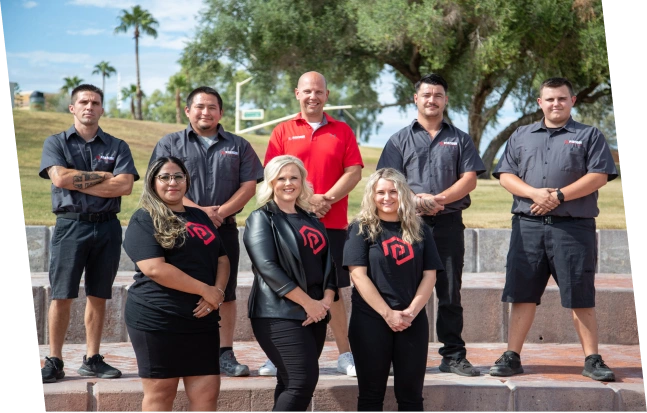Well, you’re not alone. The shortages, or the R410a refrigerant phase out, to be specific, are causing quite a stir, and understanding the why and how behind it can help you navigate these changes better. Let’s explore what’s causing this and how it affects both businesses and everyday consumers.
What is R410a Refrigerant?
R410a refrigerant, also known as Puron, is the lifeblood of many modern air conditioning and heat pump systems. It replaced R22 refrigerant due to its lower ozone depletion potential, making it the go-to choice in residential and commercial cooling systems. Unlike R22, R410a operates at higher pressure, enhancing energy efficiency and cooling effectiveness. As the R410a refrigerant price continues to rise, homeowners are increasingly resorting to alternative options to manage their cooling needs and control costs.
The Role of R410a in HVAC Systems
So, what is r410a refrigerant used for? In simple terms, it’s the substance that absorbs and releases heat, enabling your air conditioner to cool your home. Without this refrigerant, your AC unit is just a fancy fan. R410a’s high efficiency means it cools your space more effectively, making it crucial for maintaining comfort, especially in hot climates.
Why Is There a Shortage of R-410a Refrigerant?
The R410a refrigerant shortage is due to the phase-out of R-22, an older refrigerant that was commonly used before R410a. As R22 has become less available, demand for R410a has increased significantly, straining the supply chain. This surge in demand, combined with limited supply, has caused the R410a refrigerant price increase, impacting consumers. Furthermore, another reason for the R410a refrigerant price increase and shortage is the AIM Act, which authorizes the U.S. Environmental Protection Agency (EPA) to reduce the production and consumption of hydrofluorocarbons or HFCs for short. HFCs, including R410a, are known for their high global warming potential (GWP), meaning they contribute significantly to greenhouse gas emissions and climate change.

Under the AIM Act, the production and import of HFCs like R410a will be progressively reduced over the coming years. The AIM Act specifically targets an 85% reduction in HFC production by 2036. It achieves this by setting annual limits on the amount of HFC that can be produced or imported, with strict quotas and regulations to ensure compliance.

How Will the R410a Refrigerant Phase Out Impact Homeowners
The refrigerant shortage is not just an industry issue; it has direct implications for homeowners. Here are five key ways homeowners are affected:
- Higher Repair and Maintenance Costs – As R410a becomes scarce, the cost of air conditioning service involving this refrigerant will rise. Homeowners may face significantly higher repair bills if their HVAC systems require R410a, as service providers pass on the increased costs of this refrigerant.
- Urgent Need for System Upgrades – Older HVAC systems that rely on R410a will become more difficult and costly to maintain. Homeowners might need to upgrade to newer systems that use different refrigerants. While these newer systems are more efficient and environmentally friendly, the upfront cost of replacing an entire HVAC system can be substantial.
- Decreased Availability of Parts and Services – As the industry phases out R410a, there may be fewer parts available for HVAC systems that use this refrigerant. Technicians might also shift their focus to training for new systems and refrigerants, leading to a decrease in service availability for older R410a units. Homeowners could find themselves waiting longer for repairs or struggling to find technicians who can service their old systems.
- Impact on Home Resale Value – Homes with outdated HVAC systems reliant on R410a may see a decrease in resale value. The potential need for costly system replacements or upgrades might deter prospective buyers. Homes with newer, environmentally friendly HVAC systems might have a competitive advantage in the market.
- Long-Term Environmental Benefits and Cost Savings – Transitioning from R410a has initial costs but long-term advantages. Upgrading to newer systems with alternative refrigerants can greatly enhance energy efficiency, especially when using ACs, leading to lower utility bills. These modern systems are also more environmentally friendly, helping reduce carbon footprints and supporting eco-conscious trends among homeowners.
How the R410a Phase-Out Affects the HVAC Industry
The HVAC industry is directly impacted by the R410a phase-out, with various challenges and adjustments needed to stay competitive. Here are five key ways this phase-out is affecting the industry:
- Increased Operational Costs – As the HVAC industry faces the R410a refrigerant phase out, its cost soars. Companies face higher expenses for this refrigerant, leading to increased prices for AC repair and tighter profit margins.
- Mandatory Training and Certifications – HVAC professionals need new training for alternative refrigerants like R32 and R454B, which can be costly for businesses.
- Shift Toward Alternative Refrigerants – Companies must update their equipment to use new refrigerants, risking a competitive edge if they don’t adapt quickly.
- Regulatory Compliance and Environmental Standards – New regulations demand changes to meet environmental standards, adding administrative and operational burdens.
- New Business Opportunities – Embracing greener refrigerants can attract eco-conscious customers and open up new market opportunities.
Alternatives to Appliances That Use R410a Refrigerant
As R410a becomes less available, homeowners with HVAC systems using this refrigerant need to explore alternatives to maintain comfort and efficiency. Here are some viable options for those looking to upgrade or replace their systems:
- R32 Refrigerant – A more environmentally friendly option with lower global warming potential (GWP) than R410a. It offers better energy efficiency and is increasingly used in modern HVAC units.
- R454B Refrigerant – Another alternative with a significantly lower GWP than R410a. It provides similar cooling performance while reducing environmental impact.
- High-Efficiency Heat Pumps – Compatible with new refrigerants and offer improved energy performance. They can replace older systems using R410a and provide both heating and cooling.
- Variable Refrigerant Flow (VRF) Systems – Advanced systems compatible with alternative refrigerants, offering precise temperature control and energy savings.
- Dual-Fuel Systems – Combine an electric heat pump with a gas furnace and use more efficient refrigerants. They adapt to various climate conditions and offer flexibility.
- Smart HVAC Systems – Smart HVAC systems are designed for compatibility with alternative refrigerants, offering enhanced energy efficiency and convenience. Features include remote control and programmable settings.
- Low Refrigerant Air Conditioners – These are designed to operate efficiently with lower amounts of refrigerant compared to traditional systems. Low Refrigerant Air Conditioners are a great alternative as they reduce environmental impact and can still provide effective cooling while using less energy.
Understanding the Impact of Rising R410a Refrigerant Prices
The rising cost of R-410a refrigerant is causing trouble for many homeowners. As the supply of R410a gets tighter and the phase-out of R22 affects availability, prices are going up. Because of these high R410a refrigerant prices, people are looking for newer systems with alternative refrigerants. Exploring these options can help manage cooling needs and potentially save money in the long run.



